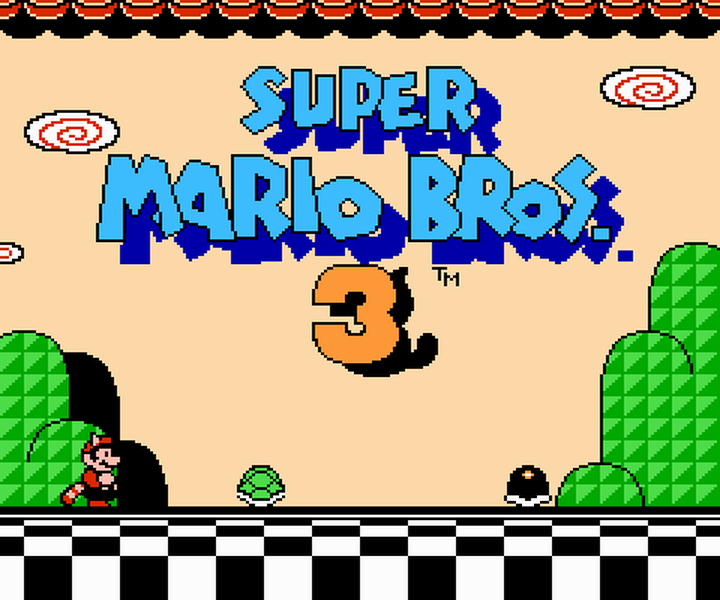
No one has played every video game. Not even the experts. In Backlog, Digital Trends’ gaming team goes back to the important games they’ve never played to see what makes them so special… Or not.
Take a look at a screenshot from any Mario game released in the last 20 years and you’ll instantly see something to love. Super Mario Galaxy’s cosmic levels give you a rush of excitement without even picking up a controller. The transformed enemies and objects in Super Mario Odyssey give just a hint of the game’s possibilities. Even the 22-year-old Super Mario 64 looks inviting, with its bright colors and cheery polygonal plumber.
I love Mario in all his forms, but I’ve actively avoided one of his adventures my whole life.
I love Mario in all his forms, but I’ve actively avoided one of his adventures my whole life. It wasn’t that I refused to play Super Mario Bros. 3, but every time I’ve had the opportunity to play it, there was always a more welcoming Mario game within an arm’s reach. It’s considered one of the most important platformers of all time, but as someone approaching it for the first time, decades after it set the world on fire, this wasn’t immediately apparent.
Super Mario Bros. 3 employs a visual style that is an uncomfortable mix of old and new. Series creator Shigeru Miyamoto claimed, years later, that the game existed as a stage play, which would account for these inconsistencies. But with the Mushroom Kingdom already being so surreal and bizarre, this explanation appeared to serve as an excuse created to fit the game’s new elements, rather than the other way around. Goombas – abandoned in the American sequel – return in Mario’s third outing, but with a gross yellowish tint that is more off-putting than it is familiar. Toad’s legs are too long, as if he managed to eat a Super Mushroom, or his own head. I could never see myself experiencing the same whimsy I felt playing other Mario games.

Looks aren’t everything
After playing for a few hours, though, I saw why my friends, peers, and the world at large had fallen in love with this game. Its mix of power-ups and difficult enemies makes for a firm-but-fair challenge, and the variety in level design is among Nintendo’s best. If there’s a particular level you don’t want to try, you can even use a special item to just skip it completely. When I reached a Koopaling boss at the end of the first castle, I expected a quick death, but using a little common sense and a few timely jumps had me beating the little dude in no time.
What impressed me the most, however, wasn’t anything specific included in Super Mario Bros 3., but rather the influence it had on some of my favorite games. I found myself overcome with a sort of “reverse nostalgia” during my time with Super Mario Bros. 3. Every few minutes, I would recognize something from a game that I had played before, but was released long after this had been.
I found myself overcome with a sort of ‘reverse nostalgia’
No longer did we have to rely on trial and error or guessing games in order to progress, which we saw as the Castlevania and Zelda series moved to the Super Nintendo. Its tricks — hiding enemies and special areas high and low — have become staples of first-person shooters like Doom and even Dark Souls, giving players reasons to replay levels beyond getting a higher score.
Even more than 25 years later, it’s astounding just how creative Super Mario Bros. 3 feels. Secrets were a staple of the original Super Mario Bros., with the famous “warp zone” allowing players to quickly skip several worlds in order to make it to Bowser more quickly. Super Mario Bros. 3 rewarded keen-eyed players even more – certain levels can only be traversed after acquiring a raccoon suit and flying up above holes in the ceiling. Others are actually easier to complete in Mario’s original “little” form, which is a design philosophy we often see amateurs use when creating levels in Super Mario Maker. Even the most mundane element of the environment – the basic brick block – is often an enemy in disguise, ready to pounce when you least expect it.
Though this design philosophy did exist in the previous two Mario games, it became a critical tool in Super Mario Bros. 3. The default way to play through a level didn’t have to just be sprinting from left to right. The rewards for your curiosity are often limited to extra collectibles not necessary for reaching the game’s final credits, but by questioning every component of a stage, searching for hidden items, and even turning enemies into power-ups to reach inaccessible areas, it becomes much cleverer than it initially appeared. That kind of rule-bending informs the cleverness at the heart of all the other Mario’s adventures that came after it, including Super Mario Odyssey.
When it comes down to it, I’d still rather play a more modern Mario. One that benefits from everything designers learned from Super Mario Bros. 3, but doesn’t have a vomit-tinted hue like its predecessor. Super Mario Odyssey begs to be loved before you take one step in its world, promising hours of fun. I found that same fun in Super Mario Bros. 3, but I had to dig through an unpleasant exterior first. Mario always makes me laugh. The Goombas don’t make me cry.






